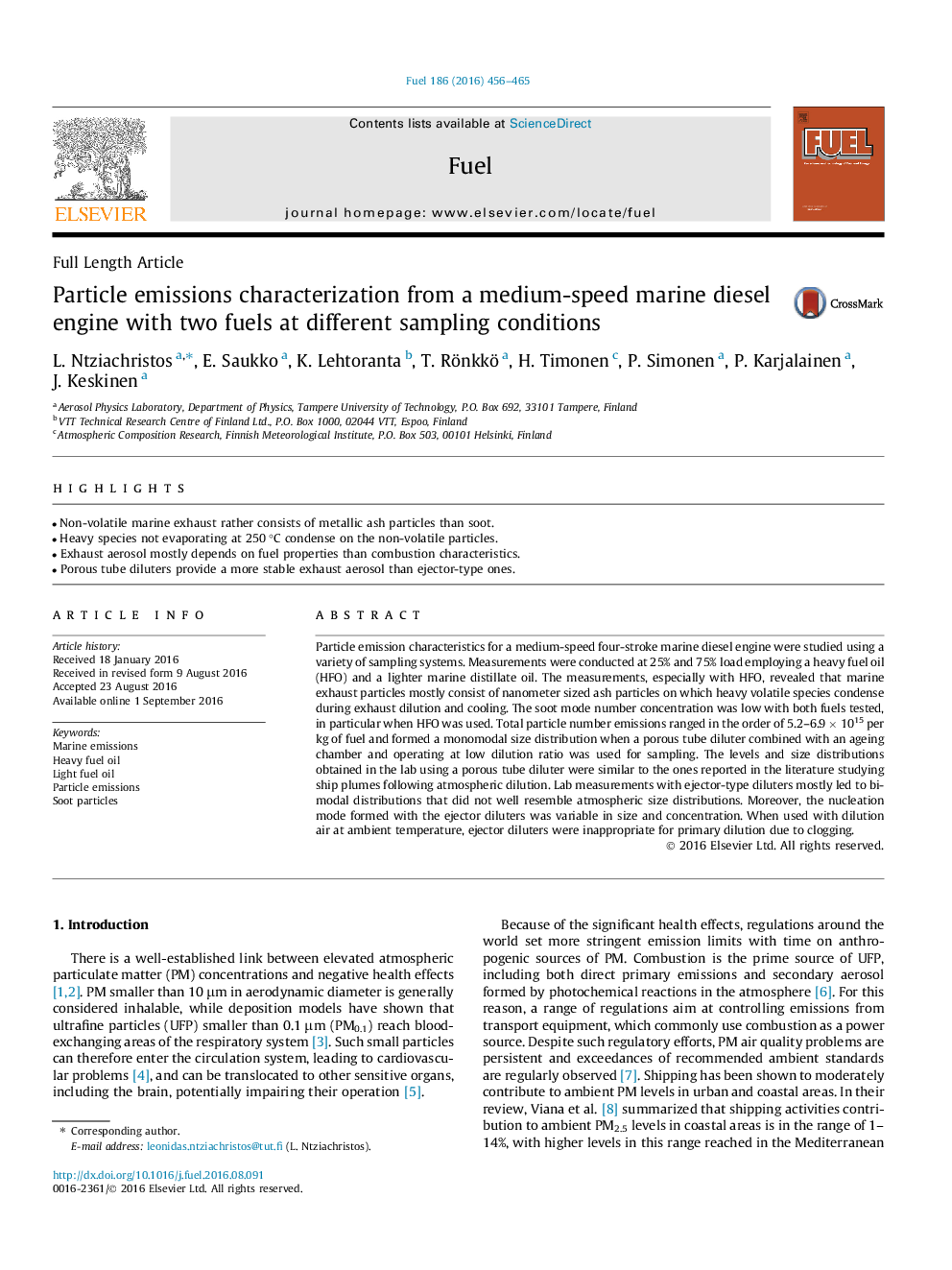| Article ID | Journal | Published Year | Pages | File Type |
|---|---|---|---|---|
| 6476124 | Fuel | 2016 | 10 Pages |
â¢Non-volatile marine exhaust rather consists of metallic ash particles than soot.â¢Heavy species not evaporating at 250 °C condense on the non-volatile particles.â¢Exhaust aerosol mostly depends on fuel properties than combustion characteristics.â¢Porous tube diluters provide a more stable exhaust aerosol than ejector-type ones.
Particle emission characteristics for a medium-speed four-stroke marine diesel engine were studied using a variety of sampling systems. Measurements were conducted at 25% and 75% load employing a heavy fuel oil (HFO) and a lighter marine distillate oil. The measurements, especially with HFO, revealed that marine exhaust particles mostly consist of nanometer sized ash particles on which heavy volatile species condense during exhaust dilution and cooling. The soot mode number concentration was low with both fuels tested, in particular when HFO was used. Total particle number emissions ranged in the order of 5.2-6.9Â ÃÂ 1015 per kg of fuel and formed a monomodal size distribution when a porous tube diluter combined with an ageing chamber and operating at low dilution ratio was used for sampling. The levels and size distributions obtained in the lab using a porous tube diluter were similar to the ones reported in the literature studying ship plumes following atmospheric dilution. Lab measurements with ejector-type diluters mostly led to bi-modal distributions that did not well resemble atmospheric size distributions. Moreover, the nucleation mode formed with the ejector diluters was variable in size and concentration. When used with dilution air at ambient temperature, ejector diluters were inappropriate for primary dilution due to clogging.
